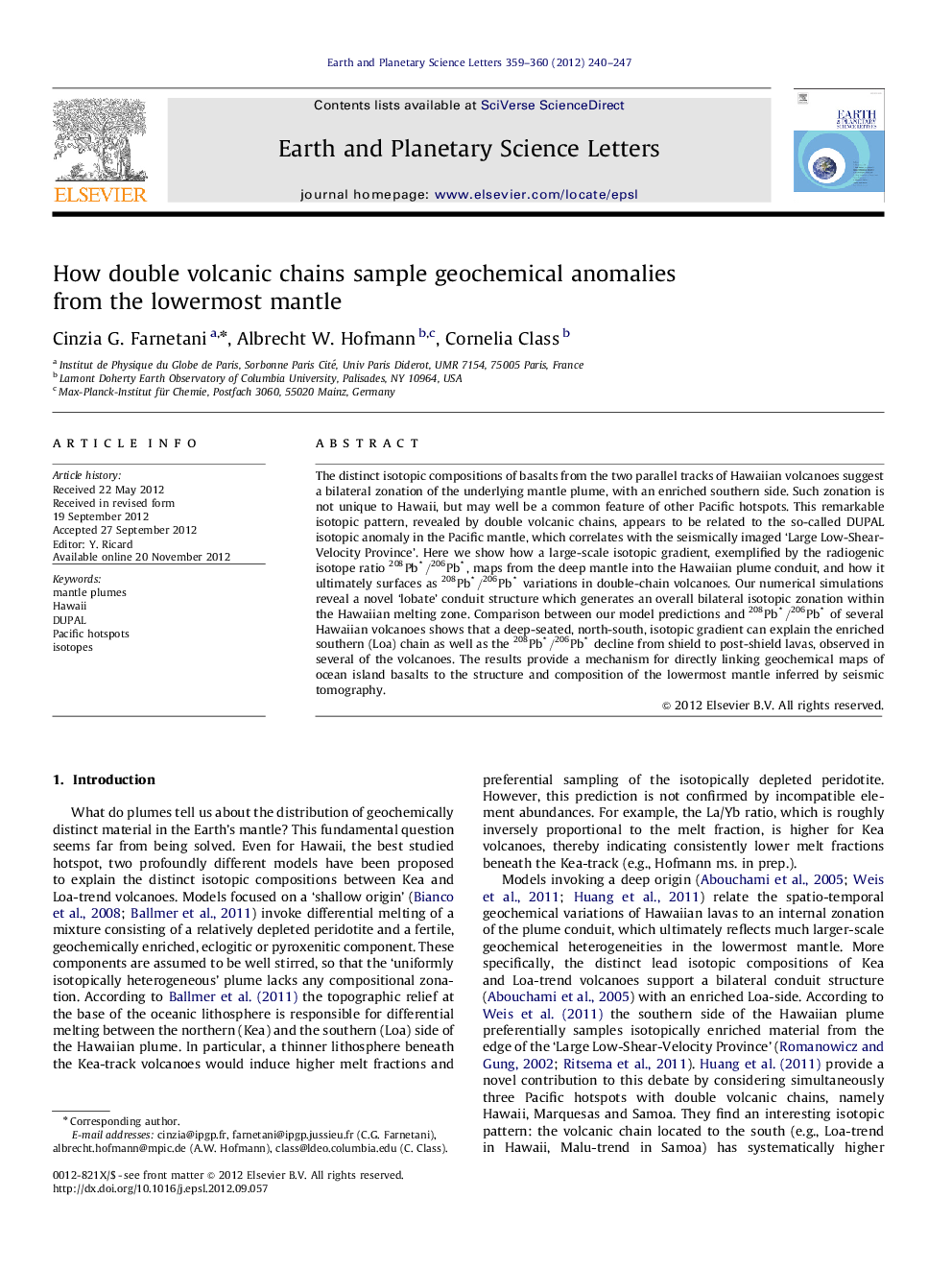| Article ID | Journal | Published Year | Pages | File Type |
|---|---|---|---|---|
| 6430408 | Earth and Planetary Science Letters | 2012 | 8 Pages |
The distinct isotopic compositions of basalts from the two parallel tracks of Hawaiian volcanoes suggest a bilateral zonation of the underlying mantle plume, with an enriched southern side. Such zonation is not unique to Hawaii, but may well be a common feature of other Pacific hotspots. This remarkable isotopic pattern, revealed by double volcanic chains, appears to be related to the so-called DUPAL isotopic anomaly in the Pacific mantle, which correlates with the seismically imaged 'Large Low-Shear-Velocity Province'. Here we show how a large-scale isotopic gradient, exemplified by the radiogenic isotope ratio Pbâ208/Pbâ206, maps from the deep mantle into the Hawaiian plume conduit, and how it ultimately surfaces as Pbâ208/Pbâ206 variations in double-chain volcanoes. Our numerical simulations reveal a novel 'lobate' conduit structure which generates an overall bilateral isotopic zonation within the Hawaiian melting zone. Comparison between our model predictions and Pbâ208/Pbâ206 of several Hawaiian volcanoes shows that a deep-seated, north-south, isotopic gradient can explain the enriched southern (Loa) chain as well as the Pbâ208/Pbâ206 decline from shield to post-shield lavas, observed in several of the volcanoes. The results provide a mechanism for directly linking geochemical maps of ocean island basalts to the structure and composition of the lowermost mantle inferred by seismic tomography.
Graphical AbstractDownload high-res image (499KB)Download full-size imageHighlights⺠We model large-scale (DUPAL-like) geochemical gradients in the lower mantle. ⺠We find a novel 'lobate' geochemical zonation of the plume conduit. ⺠We model the flow of the Hawaiian plume and map Pbâ208/Pbâ206. ⺠We explain Pbâ208/Pbâ206 differences between Loa and Kea-trend volcanoes. ⺠We explain the Pbâ208/Pbâ206 shield post-shield evolution of Big Island volcanoes.
